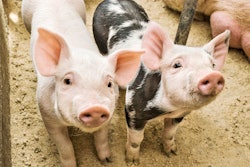
Trust and experience of supplier and nutritionist are key when replacing ingredients
Alternative energy ingredients to expensive corn (and wheat) abound, but they require some knowledge to be used properly. Apart from other cereals that may be available, agro-industrial industries are a major source of energy-rich byproducts. Also, human food industries produce subpar (for humans) batches of otherwise superb ingredients.
In order to take advantages of such opportunities, either occasionally or in a permanent basis, two basic conditions must be observed. The first is a relationship of trust with the supplier. Second is the employment of a nutritionist with considerable experience in using alternative ingredients. True savings come at a cost, and it is the balance that determines profitability.
To begin this discussion, I am presenting six alternative energy sources that I have found of considerable value through experience with my own customers, worldwide.
-
Bakery meal
Bakery meal can be composed from myriad starch- and fat-rich components such as pasta, cakes, bread, potato chips, sweets, etc. One needs to know the levels of salt, sugar, starch and oil/fat in order to use it properly in feed formulation and to evaluate its quality. For broilers, a product with high levels of lactose and sugars should be avoided, whereas a high oil (with an added antioxidant) and starch content should be preferred.
-
High oil/fat levels
Oils and fats are expensive, but occasionally batches (of good quality) can become available at bargain prices. The same goes for less well-known sources of lipids such as soap stock, for example. It is possible to use higher-than-normal levels of added oils and fats in broiler diets, assuming carcass quality changes (if any) remain within acceptable levels.
-
Tapioca (cassava)
Cassava is a product of southeast Asia and other regions that is frequently imported in other countries as it has become a commodity. It can cause cyanosis, meaning birds will die of asphyxia, if not processed properly. This effect is more of a concern as inclusion levels increase, but normally commercially available cassava from international traders is of good to high quality.
-
Minor cereals
Everything but corn and wheat can be considered a minor ingredient. Of those, only sorghum, where it is raised, instead of corn can be of an equal status to these two staple energy sources. Most alternative ingredients contain too much and too many non-starch polysaccharides which reduce energy digestibility, cause sticky droppings, and in general act as an anti-nutritional factor, albeit not a toxic one.
-
Full-fat soybeans
Soybeans contain as much as 38% oil in their natural, dried, form. Thus, when whole soybeans are available, using them after thermal processing can provide a source of energy in the form of “encapsulated” lipids that are not as prone to oxidation as lipids in oils and fats. In most cases, full-fat soybeans are extruded to reduce the anti-nutritional factors present in soybeans.
-
Molasses
It is unlikely to consider molasses for broiler feeds, but there is nothing negative in this ingredient, apart from being a semi-liquid ingredient that requires special handling. When molasses already exists as an ingredient in any feed mill, then there is no reason why a certain amount cannot be used in broiler feeds.
The above should not be considered as an exclusive list of alternative energy sources, but rather as examples of what is available.

















